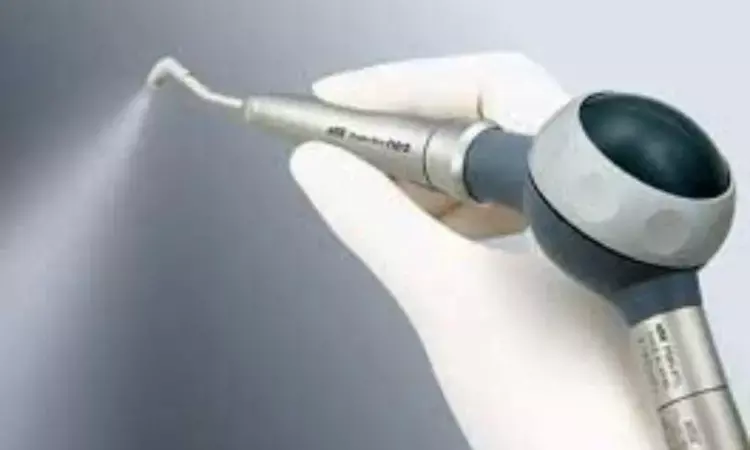- Home
- Medical news & Guidelines
- Anesthesiology
- Cardiology and CTVS
- Critical Care
- Dentistry
- Dermatology
- Diabetes and Endocrinology
- ENT
- Gastroenterology
- Medicine
- Nephrology
- Neurology
- Obstretics-Gynaecology
- Oncology
- Ophthalmology
- Orthopaedics
- Pediatrics-Neonatology
- Psychiatry
- Pulmonology
- Radiology
- Surgery
- Urology
- Laboratory Medicine
- Diet
- Nursing
- Paramedical
- Physiotherapy
- Health news
- Fact Check
- Bone Health Fact Check
- Brain Health Fact Check
- Cancer Related Fact Check
- Child Care Fact Check
- Dental and oral health fact check
- Diabetes and metabolic health fact check
- Diet and Nutrition Fact Check
- Eye and ENT Care Fact Check
- Fitness fact check
- Gut health fact check
- Heart health fact check
- Kidney health fact check
- Medical education fact check
- Men's health fact check
- Respiratory fact check
- Skin and hair care fact check
- Vaccine and Immunization fact check
- Women's health fact check
- AYUSH
- State News
- Andaman and Nicobar Islands
- Andhra Pradesh
- Arunachal Pradesh
- Assam
- Bihar
- Chandigarh
- Chattisgarh
- Dadra and Nagar Haveli
- Daman and Diu
- Delhi
- Goa
- Gujarat
- Haryana
- Himachal Pradesh
- Jammu & Kashmir
- Jharkhand
- Karnataka
- Kerala
- Ladakh
- Lakshadweep
- Madhya Pradesh
- Maharashtra
- Manipur
- Meghalaya
- Mizoram
- Nagaland
- Odisha
- Puducherry
- Punjab
- Rajasthan
- Sikkim
- Tamil Nadu
- Telangana
- Tripura
- Uttar Pradesh
- Uttrakhand
- West Bengal
- Medical Education
- Industry
Rotary and ultrasonic instruments tied with airborne spreading disease agents

Rotary and ultrasonic instruments tied with airborne spreading disease agents according to the latest study published in the
The use of dental handpieces produces aerosols containing microbial agents, bacteria, and viruses representing a high-risk situation for airborne cross infections. The aim of this study was to map and quantify the biological contamination of a dental operatory environment using a biological tracer.
Streptococcus mutans suspension was infused into the mouth of a manikin, and an operator performed standardized dental procedures using an air turbine, a contra-angle handpiece, or an ultrasonic scaler. The presence of the tracer was measured at 90 sites on the dental unit and the surrounding surfaces of the operatory environment.
Results
- All tested instruments spread the tracer over the entire dental unit and the surrounding environment, including the walls and ceiling.
- The pattern and degree of contamination were related to the distance from the infection source.
- The maximum distance of tracer detection was 360 centimeters for air turbine, 300 cm for contra-angle handpiece, and 240 cm for ultrasonic scaler.
- No surface of the operative environment was free from the tracer after the use of the air turbine.
Attention should be paid to minimize or avoid the use of rotary and ultrasonic instruments when concerns for the airborne spreading of pandemic disease agents are present. This study supports the recommendations of dental associations to avoid treatments generating aerosols, especially during pandemic periods. Guidelines for the management of dental procedures involving aerosols, as well as methods for the modification of aerosols aimed to inactivate the infective agent, are urgently needed.
Reference:
Andrei C. Ionescu, Maria G. Cagetti, Jack L. Ferracane, Franklin Garcia-Godoy, Eugenio Brambilla, et al. Topographic aspects of airborne contamination caused by the use of dental handpieces in the operative environment. The Journal of the American Dental Association. Published:July 01, 2020DOI:https://doi.org/10.1016/j.adaj.2020.06.002
Key Words
Aerosols, air microbiology, bacteria, communicable disease control, cross infection, decontamination, dental equipment, disease transmission, patient-to-professional, Streptococcus, Andrei C. Ionescu, Maria G. Cagetti, Jack L. Ferracane, Franklin Garcia-Godoy, Eugenio Brambilla
Dr. Shravani Dali has completed her BDS from Pravara institute of medical sciences, loni. Following which she extensively worked in the healthcare sector for 2+ years. She has been actively involved in writing blogs in field of health and wellness. Currently she is pursuing her Masters of public health-health administration from Tata institute of social sciences. She can be contacted at editorial@medicaldialogues.in.
Dr Kamal Kant Kohli-MBBS, DTCD- a chest specialist with more than 30 years of practice and a flair for writing clinical articles, Dr Kamal Kant Kohli joined Medical Dialogues as a Chief Editor of Medical News. Besides writing articles, as an editor, he proofreads and verifies all the medical content published on Medical Dialogues including those coming from journals, studies,medical conferences,guidelines etc. Email: drkohli@medicaldialogues.in. Contact no. 011-43720751


